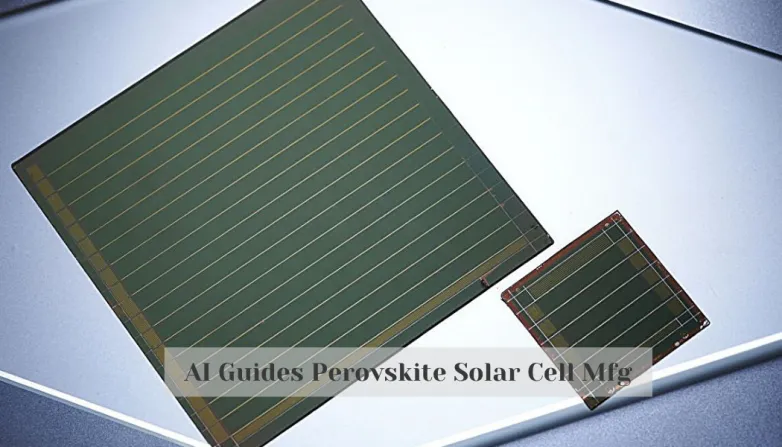AI Guides Perovskite Solar Cell Mfg
- Discover how AI can help produce high-grade perovskite solar cells with greater efficiency. Learn how Karlsruhe Institute of Technology and two Helmholtz platforms used AI to predict the quality of perovskite layers and cells with their Advanced Materials breakthrough.

Using AI as a guide for the better manufacturing of perovskite solar cells, researchers from Karlsruhe Institute of Technology (KIT) and two Helmholtz platforms have developed ways to predict the quality of the perovskite layers and solar cells. They used machine learning and artificial intelligence (AI) methods to assess their quality from variations in light emission occurring during production. This breakthrough was published in Advanced Materials, and the results demonstrate how AI can be used to improve the manufacturing process of perovskite tandem solar cells.
Perovskite tandem solar cells are a next-generation technology with an efficiency of over 33%. This was achieved by producing an extremely thin high-grade perovskite layer, which is a challenge due to the numerous unknown factors that can affect its quality. To address this, the researchers developed AI methods to train and analyze neural networks using a huge dataset including video recordings of the photoluminescence of the layers. They then used explainable AI to filter and analyze the findings, eventually leading to the prediction of whether each solar cell would achieve a low or high level of efficiency. This has given a blueprint for further research, as AI can be used to gain highly relevant insights into materials science and energy research in a systematic way.
How Can AI Improve Perovskite Tandem Solar Cell Efficiency?
- AI-based simulations of perovskite tandem solar cell materials can help identify materials with desired properties.
- AI can be used to design structures that optimize the efficiency of tandem solar cells.
- AI can be used to monitor and analyze the performance of tandem solar cells in real-time, providing data that allows for improved designs.
- AI can help identify and analyze defects in the materials, allowing researchers to focus on areas where improvement will have the most impact on efficiency.
- AI can help in the development of efficient charge-transfer layers, which are critical to the efficiency of the tandem solar cell.
- AI algorithms can be used to optimize materials parameters, such as layer thickness and material composition, to maximize solar cell efficiency.
Also read
- CNNP Optoelectronics brings utility-scale perovskite modules out of the lab
- Low-Temperature Sequential Deposition Lifts Inverted Perovskite Solar Cells Efficiency Record
- Sunkind Partners with JA Solar for Major Indian PV Expansion
- Self-Assembling Molecule Breakthrough Brings Commercial Perovskite Solar Closer to Market
- Camphor Additives Boost Perovskite Solar Cell Efficiency
